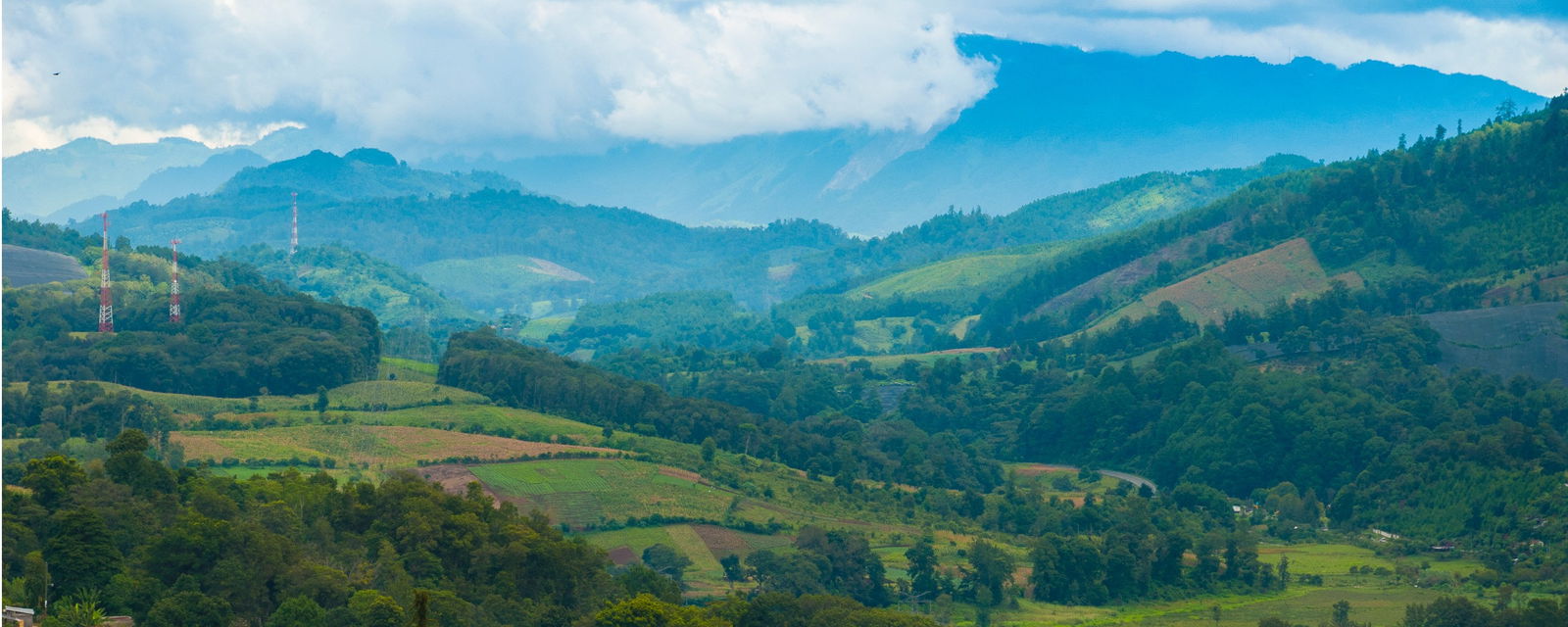


Definitely off the beaten path, Verapaz is marked by tiny villages that adhere to traditional ways. While in the capital city of this department, Coban, you will find a more urban climate, many tend to travel here to get a taste of simpler Guatemalan life. As far as outdoor adventure, there is plenty to explore in Verapaz—from swimming in Lachua Lake to spelunking in the Lanquin cave system, featuring wondrous limestone formations, the outdoor lover will feel right at home in Verapaz.
Turquoise water, an invigorating series of stepped natural “pools” in which to swim and a gorgeous limestone bridge…no wonder why so many make the trek to Semuc Champey though it’s not the easiest to get to. The Cahabon River runs beneath the bridge.
A nature reserve, popular given the chance that one might spot a rare quetzal, this is a cloud forest ecosystem that has much to offer by way of wildlife, flora and fauna. There are trails which run throughout the reserve and even lead you to a 450 tree.
For orchid lovers, this is a can’t miss. Dubbed an orchid sanctuary, this place offers guided tours documenting the Mayan history of orchid collecting. There are even cabins in which you can stay the night.

Verapaz's winter, from December to February, offers pleasant weather with temperatures ranging from the mid-50s to low 70s Fahrenheit in Alta Verapaz and slightly warmer in Baja Verapaz. It's an ideal time to visit these departments as it allows for comfortable exploration of their natural beauty and cultural heritage. Winter is perfect for visiting the Semuc Champey natural pools in Alta Verapaz, where visitors can swim in crystal-clear turquoise waters surrounded by lush jungle.

Spring in Verapaz, from March to May, brings slightly warmer temperatures with highs in the 60s to mid-70s Fahrenheit in Alta Verapaz and higher temperatures in Baja Verapaz. The landscapes remain lush and green from the previous rainy season. Spring is ideal for exploring the nearby Lanquin Caves and learning about the region's geological wonders. Visitors can also hike to the Mirador Rey Marcos viewpoint for breathtaking vistas of the Verapaz region.

Verapaz's summer, from June to August, marks the beginning of the rainy season. While it can be humid with temperatures in the 60s to low 70s Fahrenheit in Alta Verapaz and slightly higher in Baja Verapaz, it also provides a refreshing atmosphere amid the verdant surroundings. Summer offers opportunities for eco-tourism activities like birdwatching in the cloud forests of Sierra de las Minas Biosphere Reserve in Alta Verapaz. Visitors can also explore the agricultural fields and coffee plantations in Baja Verapaz.

Fall in Verapaz, from September to November, is the peak of the rainy season. The weather remains cool, with temperatures ranging from the mid-50s to low 70s Fahrenheit in Alta Verapaz and slightly higher in Baja Verapaz. Despite the rains, fall is an excellent time to experience the region's rich indigenous culture and attend local festivals. Visitors can participate in traditional Mayan ceremonies and celebrations, and explore the traditional markets in Cobán, the capital city of Alta Verapaz. Fall is also an ideal time to visit the Chilascó Waterfalls and other natural wonders in Baja Verapaz.